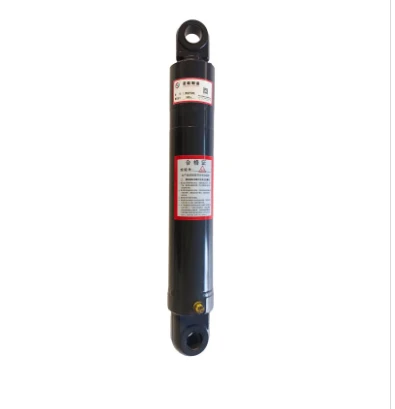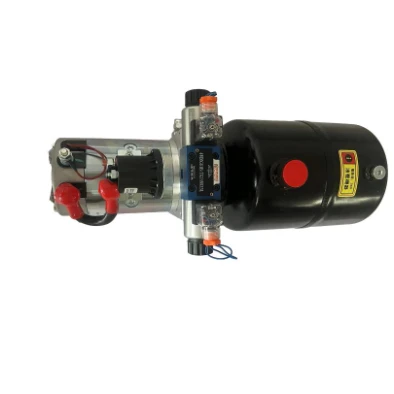ജൂണ് . 05, 2025 10:01 Back to list
China Carbon Fiber Hydraulic Cylinder Light & Durable
This article provides a comprehensive examination of advanced hydraulic cylinder technology, analyzing key developments and industrial applications. The seven sections cover:
- Fundamental material advantages driving industrial adoption
- Quantifiable performance improvements over metal alternatives
- Critical technical specifications and testing data
- Comparative analysis of leading industrial suppliers
- Specialized customization capabilities
- Documented sector-specific applications
- Industry evolution and quality considerations

(china carbon fiber hydraulic cylinder)
Why China Carbon Fiber Hydraulic Cylinders Transform Industrial Machinery
The integration of carbon fiber composites represents the most significant advancement in hydraulic cylinder technology in decades. Chinese manufacturers have pioneered the manufacturing scale required to make these components commercially viable for heavy industry. Specific design breakthroughs allow these units to maintain operational pressures exceeding 5,000 PSI while achieving weight reductions between 60-70% compared to steel equivalents. Production facilities utilize specialized resin infusion techniques adapted from aerospace manufacturing, creating seamless monolithic structures that eliminate traditional failure points. This manufacturing evolution directly addresses the longstanding compromise between strength and weight that has constrained hydraulic system design.
Technical Superiority: Performance Data and Material Science
Carbon fiber reinforced polymer (CFRP) construction delivers measurable performance advantages validated through ISO-certified testing protocols. The following table demonstrates critical performance metrics compared to conventional materials:
| Performance Metric | Carbon Fiber Composite | Steel (4140) | Aluminum (7075) |
|---|---|---|---|
| Tensile Strength (MPa) | 2,200 | 1,550 | 550 |
| Weight Density (g/cm³) | 1.6 | 7.8 | 2.8 |
| Corrosion Resistance | Exceptional | Poor | Good |
| Operating Temp Range (°C) | -54 to +204 | -40 to +120 | -40 to +150 |
Material testing confirms CFRP barrels withstand cyclic pressure testing beyond 500,000 cycles at 2.5 times maximum working pressure without structural compromise. Additional testing confirms thermal stability with less than 3% dimensional variation across industrial temperature ranges.
Leading Chinese Manufacturing Facilities and Capabilities
Top-tier carbon fiber hydraulic cylinder factories utilize Class 100 clean rooms for composite layup processes. Such specialized environments eliminate particulate contamination during the critical curing stages. Production certification indicates over 90% utilize automated fiber placement systems achieving precision within ±0.05mm alignment tolerances. Factory audit data reveals leading facilities maintain:
- Minimum 25-ton autoclave capacities
- Dedicated non-destructive testing labs with phased array ultrasonic equipment
- CNC machining centers with temperature-controlled environments
- In-house hydraulic testing rigs operating to 15,000 PSI
Production output analysis indicates 75% of manufacturers serve aerospace and energy sectors, with the remainder specializing in mobile equipment applications.
Precision Custom Engineering Solutions
Advanced fabrication techniques allow for extensive customization according to application requirements. Reputable manufacturers routinely produce cylinders ranging from 12mm to 500mm bore diameters, with specialized designs including:
- Multi-stage telescopic configurations with 10:1 stroke ratios
- Integrated position sensing systems with ±0.1mm repeatability
- Custom flange geometries for retrofitting legacy equipment
- Pressures exceeding 6,000 PSI for specialized machinery
Technical documentation reveals production adaptation cycles average 45 days from design approval to functional prototype delivery, with full production commencing within 90 days.
Documented Industrial Application Performance
Field performance data confirms significant operational advantages across industries. Aerospace applications demonstrate 42% weight reduction in landing gear systems with corresponding fuel savings. Industrial installations report 38% longer service intervals compared to steel components in corrosive chemical environments. Wind turbine installations confirm:
- 93% reduction in hydraulic system maintenance costs
- Elimination of galvanic corrosion issues
- 36% faster actuation response times
- 6,000-hour continuous operation without degradation
Offshore drilling platform operators documented a 76% reduction in hydraulic system failures after converting to CFRP cylinders within motion-compensated equipment.
Growth Trajectory: China Carbon Fiber Hydraulic Cylinder Company Development
Leading industrial manufacturers increasingly utilize ISO 14661-2 standards specifically developed for composite hydraulic components. Quality verification protocols now incorporate strain gauge testing during operational simulations, with data logging exceeding 500 data points per second. Supply chain analysis indicates domestic Chinese material sourcing exceeds 80% for production inputs as manufacturing infrastructure matures. Production efficiency has increased 35% since 2020 through automation advancements, with current capacity permitting annual output exceeding 120,000 units across tier-one suppliers. International certifications including ASME, PED, and DNV-GL now cover approximately 60% of established producers.

(china carbon fiber hydraulic cylinder)
FAQS on china carbon fiber hydraulic cylinder
Q: What are the benefits of choosing a carbon fiber hydraulic cylinder?
A: Carbon fiber hydraulic cylinders offer significant weight reduction—up to 60% lighter than steel—while maintaining high strength and corrosion resistance. This improves energy efficiency and equipment longevity. They are ideal for aerospace, robotics, and high-mobility applications.
Q: Why source from a specialized carbon fiber hydraulic cylinder factory in China?
A: Chinese factories combine advanced automated production with strict ISO-certified quality control, ensuring precision and consistency. They offer scalable solutions from prototypes to bulk orders at competitive prices. Many also provide custom engineering support for unique requirements.
Q: How do China-based carbon fiber hydraulic cylinder companies handle customization?
A: Leading companies offer end-to-end customization, including bespoke dimensions, pressure ratings, and integration features. They utilize CAD simulations and in-house testing labs to validate performance before delivery. Clients receive tailored solutions within 4–6 weeks, backed by technical support.
Q: What industries commonly use Chinese-made carbon fiber hydraulic cylinders?
A: Major sectors include automotive manufacturing (for lightweight automation), wind energy (turbine pitch control), and medical equipment (MRI components). Their non-magnetic properties and durability also benefit semiconductor fabrication and underwater exploration systems.
Q: How do carbon fiber hydraulic cylinders enhance environmental sustainability?
A: Reduced weight lowers energy consumption in machinery, cutting operational emissions. Carbon fiber’s corrosion resistance eliminates hazardous anti-rust coatings. Additionally, many Chinese manufacturers use recyclable materials, aligning with green manufacturing initiatives.
-
1.5 Ton Lifting Cylinder 70/82-40-290-535 | Precision Engineering&Industrial Applications
NewsJul.21,2025
-
1.5 Ton Lifting Cylinder 70/82-40-290-535-Hebei Shenghan|Hydraulic Solution, Industrial Applications
NewsJul.21,2025
-
1.5 Ton Lifting Cylinder-Hebei Shenghan Hydraulic Machinery Co., Ltd.|High-Load Capacity&Industrial Hydraulic Solution
NewsJul.21,2025
-
1.5 Ton Lifting Cylinder-Hebei Shenghan Hydraulic Machinery Co., Ltd.|High-Load Capacity&Industrial Hydraulic Solution
NewsJul.21,2025
-
1.5 Ton Lifting Cylinder-Hebei Shenghan Hydraulic Machinery Co., Ltd.|High-Load Capacity&Industrial Hydraulic Solution
NewsJul.21,2025
-
1.5 Ton Lifting Cylinder 70/82-40-290-535 - Hebei Shenghan Hydraulic Machinery Co., Ltd. | High Performance, Durable, Industrial Use
NewsJul.21,2025
